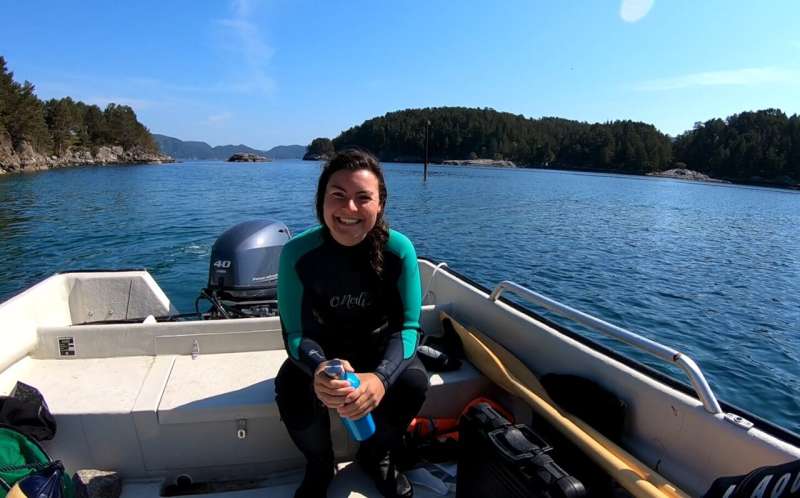fish.indah.link
Dakar, Senegal – Every year, European companies contribute to a tragic diversion of fresh fish essential in maintaining food security for over 33 million people in the West African region. This is the conclusion of a new report by Greenpeace Africa and Changing Markets, Feeding a Monster: How European aquaculture and animal feed industries are stealing food from West African communities.
The report reveals how more than half a million tonnes of small pelagic fish are extracted every year along the coast of West Africa and converted into feed for aqua- and agriculture farming, dietary supplements, cosmetics and pet food products outside the African continent.[1]
“The fishmeal and fish oil industry, and all governments and companies supporting them, are basically robbing local populations of livelihoods and food. This goes against international commitments on sustainable development, poverty alleviation, food security, and gender equality,” said Dr Ibrahimé Cissé, Senior Campaigner at Greenpeace Africa.
The report is based on research of the fishmeal and fish oil (FMFO) trade links between the FMFO industry in West Africa and the European market. It includes traders, aqua- and agrofeed companies in France, Norway, Denmark, Germany, Spain, and Greece.[2] It also looks at supply chain relationships between seafood processors/distributors and farmed fish producers that have been sourcing aquafeed from companies involved in West African FMFO trade in recent years, and well-known retailers from France (Carrefour, Auchan, E.Leclerc, Système U, Monoprix, Groupe Casino), Germany (Aldi Süd, Lidl, Kaufland, Rewe, Metro AG, Edeka.), Spain (Lidl Espana), and the UK (Tesco, Lidl, Aldi).[3]
“Exports of fishmeal and fish oil to Europe are stealing the livelihoods of coastal communities, by depriving populations of an important food source and means of income. European aquafeed companies and retailers can no longer ignore this major human rights and environmental issue. Now is the time to rethink supply chains and rapidly phase out the use of wild-caught fish in farmed fish and other animals, to preserve these fish populations for future generations,” said Alice Delemare Tangpuori, Campaigns Manager, Changing Markets.
Greenpeace and Changing Markets’ research confirms a rapid expansion of FMFO in the past few years, particularly in Mauritania, where 70% of the fish oil exports went to the EU in 2019. The governments of Mauritania, Senegal and The Gambia have so far failed to properly manage their common small pelagic fish resource, as well as to take the appropriate measures to ensure the right to food and livelihood for their impacted communities, including the artisanal fishing sector, who continue to protest against the FMFO factories.
“In the cold season currently in Senegal, it is very difficult, if not impossible, to find sardinella at the usual landing points. The consequences on the food and nutritional security of local people are catastrophic as well as on the balance of the food chain at sea,” said Dr. Alassane Samba, Former Director of Research and Director of the Dakar-Thiaroye Oceanographic Research Center in Senegal.[4]
Harouna Ismail Lebaye, President of FLPA (Artisanal Fishing Free Federation), Nouadhibou section, in Mauritania, has a strong message for companies and governments involved in FMFO sourcing: “Your investments rob us of our fisheries resources, your investments starve us, your investments threaten our stability, your factories make us sick… It’s time to stop now.”
Greenpeace Africa and Changing Markets are calling on companies, policy makers and governments to stop taking fish fit for human consumption from West Africa to feed fishmeal and fish oil demand in the European Union and Norway.
ENDS
Photo and video available from the Greenpeace Media Library:
Photos: https://media.greenpeace.org/Share/1wns56x0dcto237omqm5545fuonrvp3l
Videos: https://media.greenpeace.org/Share/74v2osj4fwon236v732te462776h71bv
Contacts:
Greenpeace Africa press desk: [email protected]npeace.org
Mikaïla Issa, Consultant Communications and Media for Greenpeace Africa: +221782199410, [email protected]
Christina Koll, Senior Communications Coordinator, Greenpeace Africa (for international media requests): +4528109021, [email protected]
Notes:
[1] Feeding a Monster: How European aquaculture and animal feed industries are stealing food from West African communities, Report from Greenpeace Africa and Changing Markets, June 2021, https://www.greenpeace.org/static/planet4-africa-stateless/2021/05/47227297-feeding-a-monster-en-final-small.pdf
[2] The FMFO traders, aqua and agrofeed companies by country are: France (Olvea), Norway (GC Rieber, EWOS/Cargill, Skretting, Mowi), Denmark (ED&F Man Terminals, TripleNine, FF Skagen, Pelagia and BioMar), Germany (Köster Marine Proteins), Spain (Inproquisa, Industrias Arpo, Skretting Espana), and Greece (Norsildmel Innovation AS).
[3] According to the report, “Although we cannot establish a direct chain of custody between the retailers and West African FMFO, Changing Markets has reported – through publicly accessible sources, in-store visits, interviews and investigations – supply chain relationships between the retailers mentioned in the report Feeding a Monster: How European aquaculture and animal feed industries are stealing food from West African communities, seafood processors/ distributors, and farmed fish producers that have been sourcing aquafeed from companies involved in the trade of West African FMFO in recent years. The maintenance of these relationships is problematic, and irrespective of whether there is a direct chain of custody, they should not source from those who source from West Africa.”
[4] The main species at stake in the FMFO production, flat and round sardinella and bonga, are essential to the food security of millions of people in the region. According to the Food and Agriculture Organization (FAO) these fish resources are overexploited and a 50% reduction in fishing effort is needed — FAO Working Group on the Assessment of Small Pelagic Fish off Northwest Africa 2019. Summary report available at: http://www.fao.org/3/cb0490en/CB0490EN.pdf
The Link Lonk
June 01, 2021 at 11:25AM
https://ift.tt/2Trk8jT
West Africa to Europe fishmeal, fish oil imports expose broken food system - Greenpeace International
https://ift.tt/35JkYuc
Fish







